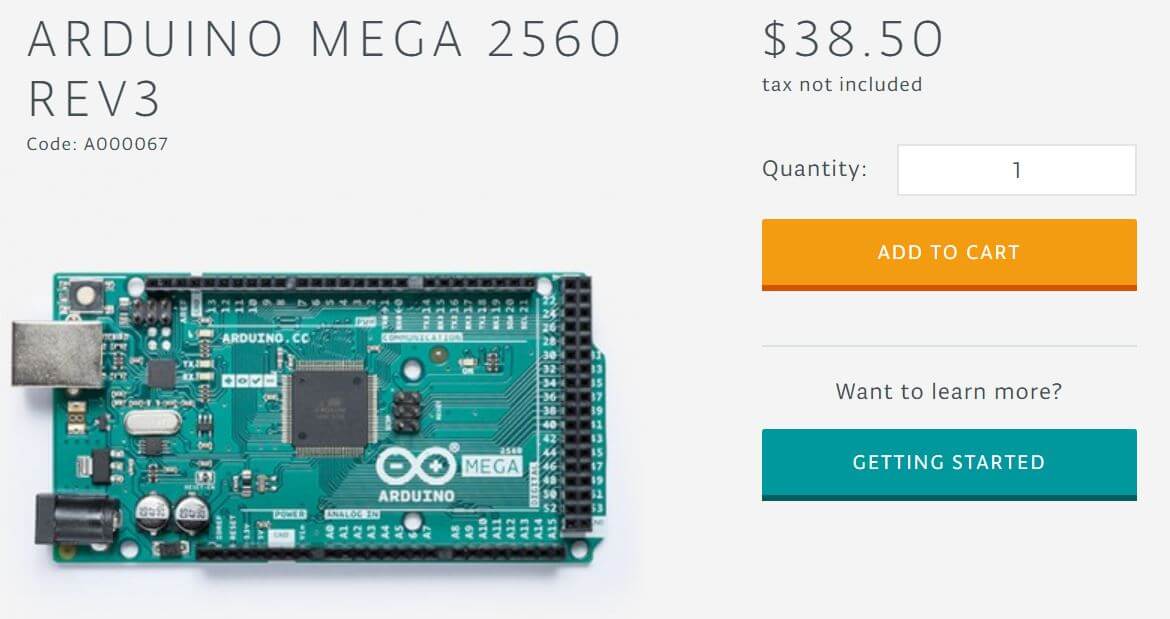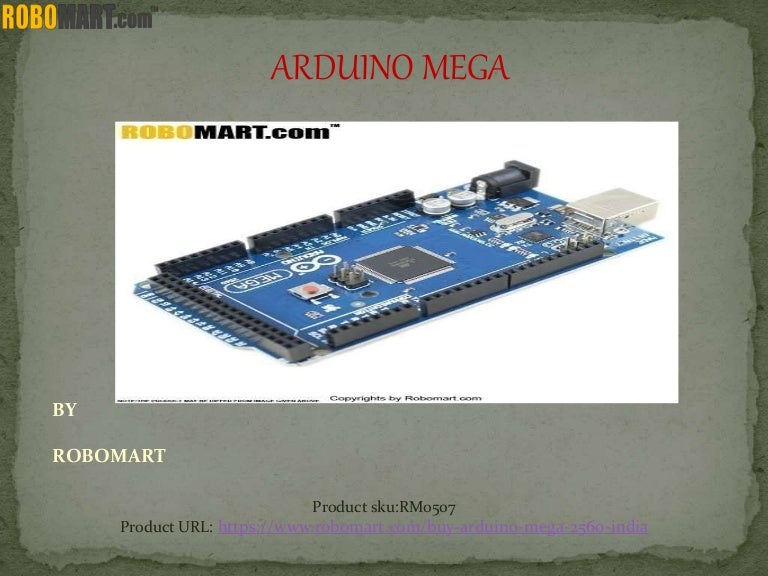

Used to receive (RX) and transmit (TX) TTL serial data. In addition, some pins have specialized functions: Each pin can provide or receive a maximum of 40 mA and has an internal pull-up resistor (disconnected by default) of 20-50 kOhms.
#Arduino mega code#
The ATmega2560 has 256 KB of flash memory for storing code (of which 8 KB is used for the bootloader), 8 KB of SRAM and 4 KB of EEPROM (which can be read and written with the EEPROM library).Įach of the 54 digital pins on the Mega can be used as an input or output, using pinMode(), digitalWrite(), anddigitalRead() functions. A properly configured shield can read the IOREF pin voltage and select the appropriate power source or enable voltage translators on the outputs for working with the 5V or 3.3V. This pin on the Arduino board provides the voltage reference with which the microcontroller operates. A 3.3 volt supply generated by the on-board regulator. Supplying voltage via the 5V or 3.3V pins bypasses the regulator, and can damage your board. The board can be supplied with power either from the DC power jack (7 - 12V), the USB connector (5V), or the VIN pin of the board (7-12V). This pin outputs a regulated 5V from the regulator on the board. You can supply voltage through this pin, or, if supplying voltage via the power jack, access it through this pin.ĥV.

The input voltage to the Arduino board when it's using an external power source (as opposed to 5 volts from the USB connection or other regulated power source).

If using more than 12V, the voltage regulator may overheat and damage the board. If supplied with less than 7V, however, the 5V pin may supply less than five volts and the board may be unstable. The board can operate on an external supply of 6 to 20 volts. Leads from a battery can be inserted in the Gnd and Vin pin headers of the POWER connector. The adapter can be connected by plugging a 2.1mm center-positive plug into the board's power jack. The power source is selected automatically.Įxternal (non-USB) power can come either from an AC-to-DC adapter (wall-wart) or battery. The Arduino Mega can be powered via the USB connection or with an external power supply.

Digital I/O Pins: 54 (of which 15 provide PWM output).Schematic: arduino-mega2560_R3-schematic.pdf Schematic, Reference Design & Pin MappingĮAGLE files: arduino-mega2560_R3-reference-design.zip The second one is a not connected pin, that is reserved for future purposes. In future, shields will be compatible both with the board that use the AVR, which operate with 5V and with the Arduino Due that operate with 3.3V. Revision 3 of the board has the following new features:ġ.0 pinout: added SDA and SCL pins that are near to the AREF pin and two other new pins placed near to the RESET pin, the IOREF that allow the shields to adapt to the voltage provided from the board. Revision 2 of the Mega2560 board has a resistor pulling the 8U2 HWB line to ground, making it easier to put into DFU mode. Instead, it features the ATmega16U2 (ATmega8U2 in the revision 1 and revision 2 boards) programmed as a USB-to-serial converter.
#Arduino mega driver#
The Mega2560 differs from all preceding boards in that it does not use the FTDI USB-to-serial driver chip.
#Arduino mega update#
The Mega 2560 is an update to the Arduino Mega, which it replaces. The Mega is compatible with most shields designed for the Arduino Duemilanove or Diecimila. It contains everything needed to support the microcontroller simply connect it to a computer with a USB cable or power it with a AC-to-DC adapter or battery to get started. It has 54 digital input/output pins (of which 15 can be used as PWM outputs), 16 analog inputs, 4 UARTs (hardware serial ports), a 16 MHz crystal oscillator, a USB connection, a power jack, an ICSP header, and a reset button. The Arduino Mega 2560 is a microcontroller board based on the ATmega2560 (datasheet).


 0 kommentar(er)
0 kommentar(er)
